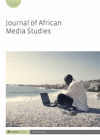
Full text loading...
 , Cornelius Bothma1
, Cornelius Bothma1
The coronavirus befell the world in late 2019 resulting in the World Health Organisation declaring a global pandemic in March 2020. As governments and health authorities around the world struggled to control the pandemic, key components of their efforts include the publicizing of their services, informing citizens of good hygiene practices, keeping the nation informed of the spread of the virus and generally keeping citizens in a positive and focused frame of mind. These efforts fall within the definition of health marketing which applies marketing principles and theories combined with health strategies to promote people’s health. These efforts also draw on both traditional and new digital channels, including online and social media, to carry across the health-marketing message to citizens. Zimbabwe is no different. The Ministry of Health and Child Care in Zimbabwe is the public authority responsible for healthcare in the country. This study reviews the three main digital channels used by the Ministry to communicate with Zimbabwean citizens, namely, their website, Facebook and Twitter. The review involves a longitudinal dissection of the communications shared across these three channels for the period from May to August 2020 and uses both content and thematic analysis to understand and critique the health communications being put out by the Ministry to its citizens. The review also takes into consideration the public comments on these communications to present a critical review of the effectiveness of these communications from a health-marketing perspective. The findings provide useful insight into the positive aspects and shortcomings of these communications and contribute to a conceptual framework for managing health-marketing communications in a time of crisis.

Article metrics loading...

Full text loading...
References


Data & Media loading...

Publication Date:
https://doi.org/10.1386/jams_00094_1 Published content will be available immediately after check-out or when it is released in case of a pre-order. Please make sure to be logged in to see all available purchase options.